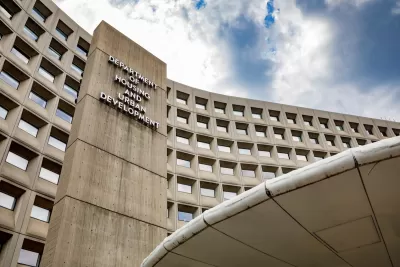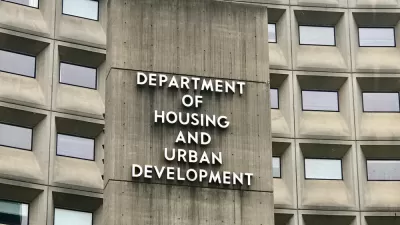Orders related to DEI and accessibility, among others, may threaten housing programs for those who need them most.

For those looking to understand what Trump’s recent executive orders might mean for housing programs in America, Shelterforce Magazine has served up a valuable deep dive into the potential implications of each order, including detailed interviews with affected federal grantees.
The piece primarily covers three orders: one relating to DEI, accessibility and environmental justice; one relating to intersex and transgender people; and one covering both the Inflation Reduction and Infrastructure Investment and Jobs Acts.
While the picture portrayed in the piece is bleak with many housing programs serving specific at-risk populations now in jeopardy, it also emphasizes that the implementation of the orders remains a question.
“The legality of these executive orders and how they will be implemented is unclear. On Friday, Feb 21, right after this article was first published, a judge issued a preliminary injunction against the anti-DEI order, saying it violated the first amendment, According to the order, federal agencies would have had to report back to the administration about their grantees’ compliance with the anti-diversity, equity, and inclusion orders by Thursday, March 20. Ongoing legal challenges are expected,” write Miriam Axel-Lute and Lara Heard.
FULL STORY: What Trump’s DEI Orders Could Mean for Housing

Maui's Vacation Rental Debate Turns Ugly
Verbal attacks, misinformation campaigns and fistfights plague a high-stakes debate to convert thousands of vacation rentals into long-term housing.

Planetizen Federal Action Tracker
A weekly monitor of how Trump’s orders and actions are impacting planners and planning in America.

In Urban Planning, AI Prompting Could be the New Design Thinking
Creativity has long been key to great urban design. What if we see AI as our new creative partner?

King County Supportive Housing Program Offers Hope for Unhoused Residents
The county is taking a ‘Housing First’ approach that prioritizes getting people into housing, then offering wraparound supportive services.

Researchers Use AI to Get Clearer Picture of US Housing
Analysts are using artificial intelligence to supercharge their research by allowing them to comb through data faster. Though these AI tools can be error prone, they save time and housing researchers are optimistic about the future.

Making Shared Micromobility More Inclusive
Cities and shared mobility system operators can do more to include people with disabilities in planning and operations, per a new report.
Urban Design for Planners 1: Software Tools
This six-course series explores essential urban design concepts using open source software and equips planners with the tools they need to participate fully in the urban design process.
Planning for Universal Design
Learn the tools for implementing Universal Design in planning regulations.
planning NEXT
Appalachian Highlands Housing Partners
Mpact (founded as Rail~Volution)
City of Camden Redevelopment Agency
City of Astoria
City of Portland
City of Laramie





























